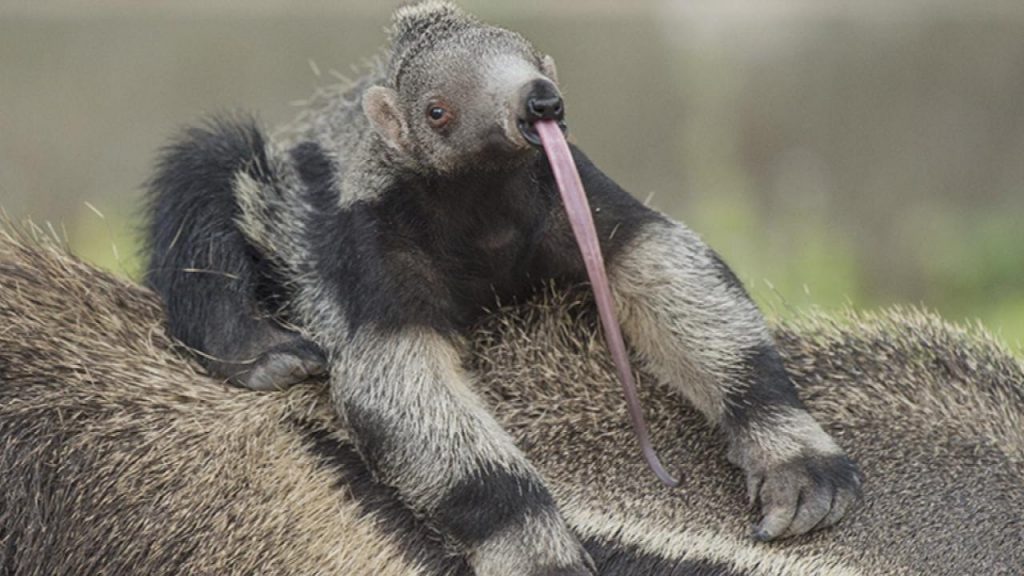They preferred habitats are grasslands, tropical forests, open woodlands and dry savannas. Giant Anteaters are specialist carnivorous predators of termites and ants.
They detect anthills and termite mounds with their acute sense of smell. When they have located their prey, the anteater digs open the nest with its huge, sharp claws.
The anteater then inserts its very long tongue into the nest and extracts the insects which are then placed in the digestive system.
The anteater has huge salivary glands that produce large amounts of sticky saliva to the tongue which allows many ants, termites and their eggs to stick to it at one time. The tongues microscopic spine-like protrusions further aid the eating process.

Its tongue can extend up to 2 feet in length and can be flicked in and out of the insects nest twice a second. As many as 30,000 – 35,000 ants can be consumed in one day.
Anteaters never completely destroy a nest. The insects can repair their damage quickly and the anteater is able to return to the nest to feed again. Anteaters are very careful to avoid the dangerous and aggressive Soldier Ants.
Giant Anteaters are solitary animals. Only mothers and their young are generally seen together. Anteaters are wandering animals and tend not to stay in one spot although some males can have territories of one square mile (larger for females).
Territories are marked with anal secretions. Occupying both rural and densely populated areas, the anteater is more nocturnal if residing in populated regions hunting for prey at night. In rural areas, anteaters will find a shelter for the night perhaps in a hollow tree or small ground depression after a days feeding.















